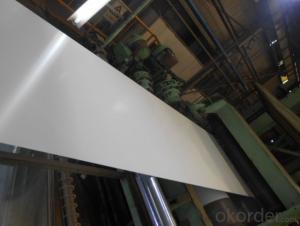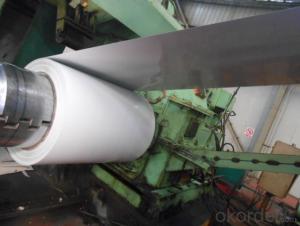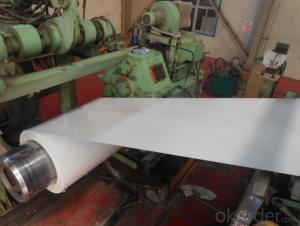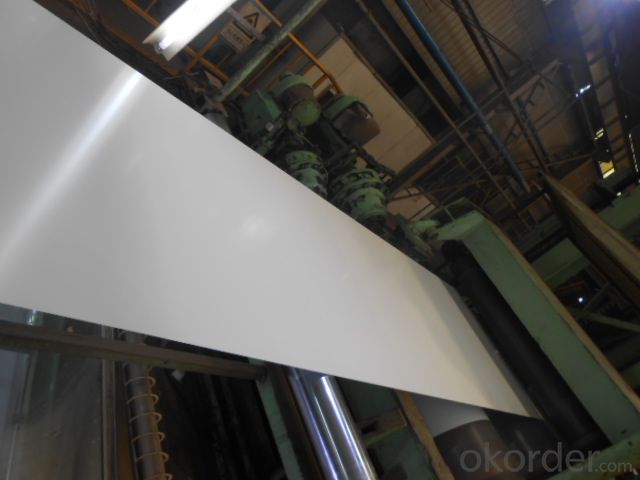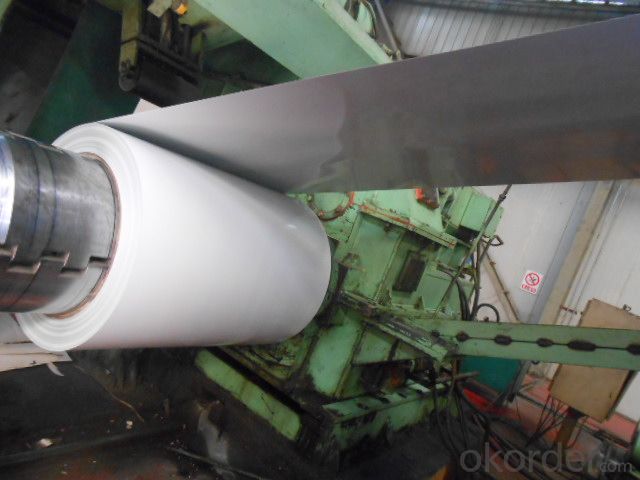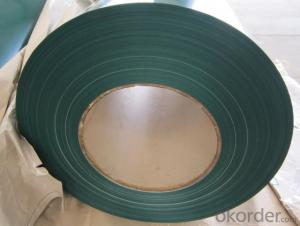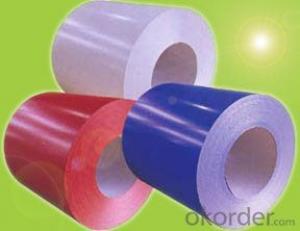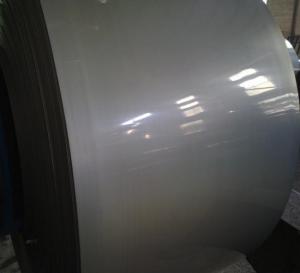PRE-PAINTED GALVANIZED STEEL COIL IN COILS
- Loading Port:
- Shanghai
- Payment Terms:
- TT OR LC
- Min Order Qty:
- 25 m.t.
- Supply Capability:
- 2000 m.t./month
OKorder Service Pledge
OKorder Financial Service
You Might Also Like
PRE-PAINTED GALVANIZED STEEL IN COILS
TOP COATING :5+13 PE,
BACK:5-7 MICRONS,EPOXY ZINC COATING:60g/m2 ( +/-10g/m2)
WEIGHT PER COIL:3-6tons COIL INNER DIAMETER:508mm
STANDARD:JIS G 3312 CGCC
SIZE: 0.50mm*1200mm*C
RED/GREEN/BLUE/BLACK/WHITE COLOR
Pre Painted Steel Coil is coated with organic layer, which provides higher anti-corrosion property and a longer lifespan than that of galvanized steel sheets.
The base metals for Pre Painted Steel Coil consist of cold rolled, HDG electro-galvanized and hot-dip alu-zinc coated steel. The finish coats of Pre Painted Steel Coil can be classified into groups as follows: polyester, silicon modified polyesters, polyvinylidene fluoride, high-durability polyester, etc.
The production process has evolved from one-coating-and-one-baking to double-coating-and-double-baking, and even three-coating-and-three-baking.
The color of the Pre Painted Steel Coil has a very wide selection, like orange, cream-colored, dark sky blue, sea blue, bright red, brick red, ivory white, porcelain blue, etc.
The Pre Painted Steel Coil can also be classified into groups by their surface textures, namely regular prepainted sheets, embossed sheets and printed sheets.
- Q: Is condensation on steel caused from water being pulled out or is the condensation formed from the air around the steel object?
- Condensation forms when temperatures vary 'quickly'. The air itself is what provides the moisture. There you go.
- Q: I'm buying a new set of steel plugs.I've heard things about streched ears and cold weather not being to good. do you think it would be bad to be wearing steal plugs?
- Personally, okorder They are spot on for sizing, they do customs, and amazing quality like i have never seen before and I have been through a lot of plugs. Hope this helps :)
- Q: What are the dimensions of steel coils used in the metalworking tool industry?
- The metalworking tool industry has a wide range of dimensions for steel coils, which can vary depending on the specific application and requirements of the tool. However, there are certain dimensions that are commonly observed in this industry. Steel coils used in metalworking tools typically come in different widths, ranging from 24 inches to 72 inches. The thickness of the coils can also vary, with common thicknesses ranging from 0.020 inches to 0.250 inches. Moreover, the length of the coils can vary significantly, with standard lengths usually falling between 100 feet and 2000 feet or even more. These dimensions are selected based on several factors, such as the type of metal being worked, the specific tool being used, and the desired outcome of the metalworking process. Additionally, other factors like the weight and handling capabilities of the tool, as well as the efficiency of the manufacturing process, may also influence the dimensions of the steel coils used. To ensure the appropriate dimensions for steel coils in the metalworking tool industry, it is essential to consult with manufacturers, suppliers, or industry experts. This is crucial because these dimensions can vary based on specific needs and preferences.
- Q: How are steel coils used in the production of automotive parts?
- Steel coils are used in the production of automotive parts as they serve as the primary raw material for manufacturing various components such as body panels, chassis, and structural parts. These coils are processed through different techniques like cutting, stamping, and welding to shape and form the desired parts. The strength and durability of steel make it an ideal material for automotive applications, ensuring the safety and performance of vehicles.
- Q: Aluminum alloy rolling doors and color steel shutter door that good
- Aluminum Alloy shutter door instead of the traditional rolling door noise inherent shortcoming, the process of opening and closing of windleavesthe sound {(Note: the design of Aluminum Alloy shutter doors from the beginning not to seal, but the curtain sheet with a silencing strip sealinghas been improved, but still did not have the seal. ) the existing Aluminum Alloy shutter door curtain film have two Aluminum Alloy hollow extrusions and Aluminum Alloy filled polyurethane foam materials, extrusiontypecurtain, hardness, making width, protective performance are better than the filling profiles, in accordance with the free choice profile door curtain sheet to the different needs of users.
- Q: How are steel coils inspected for surface finish after processing?
- Steel coils are inspected for surface finish after processing through visual inspection techniques such as using specialized lighting and magnification tools to detect any imperfections, scratches, or blemishes on the coil's surface.
- Q: How are steel coils used in the manufacturing of industrial equipment?
- Steel coils are used in the manufacturing of industrial equipment as they serve as a primary raw material for fabricating various components such as frames, supports, and structural elements. These coils are often cut, shaped, and welded to create the desired parts and structures that provide strength, durability, and stability to the equipment. The steel coils ensure that the industrial equipment can withstand heavy loads, resist corrosion, and maintain structural integrity, making them vital in the manufacturing process.
- Q: the difference between the original steel and mild steel from percentage of carbon
- Carbon steel includes mild steel. Mild carbon steel(as it is referred to) contains .05 - .29% carbon. Medium carbon steel is from .30 - .59%. High carbon steel is from .60 - .99%. Ultra high carbon steel is from 1.00 - 2.00%. Steel is considered carbon steel up to 2.1%. Past that it is considered cast iron. The more carbon in the steel the harder and less ductile and maleable it is and also the more brittle it is. The less carbon in the steel more it will bend and shape without breaking. So in essence carbon adds strength but takes away from its elasticity. If you are interested in this subject an interesting source is swordmaking where hardness(carbon content) is crucial. The information behind this subject is pretty infinite.
- Q: What are the different coil surface finishes?
- The different coil surface finishes include mill finish, brushed finish, embossed finish, polished finish, and coated finish.
- Q: Hey guys do you know anything about Steel Arch Building and how this structure really looks like?
- Steel Arch buildings consist of arched steel panes and can be erected very easily in minimal time. Steel Arch buildings can be used for both agricultural and industrial purposes. They come in the shape of an arch which serves the dual purpose of both the roof and the wall. after constructing it you can get 100% useable clear span space! No poles, beams or trusses are required for it. We can call it do-it-yourself construction cause most buildings are erected in just a few days with help from family or friends.
Send your message to us
PRE-PAINTED GALVANIZED STEEL COIL IN COILS
- Loading Port:
- Shanghai
- Payment Terms:
- TT OR LC
- Min Order Qty:
- 25 m.t.
- Supply Capability:
- 2000 m.t./month
OKorder Service Pledge
OKorder Financial Service
Similar products
Hot products
Hot Searches
Related keywords
